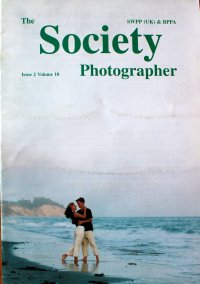articles/Weddings/colourmewild-page3
Colour me Wild! - part 3 of 1 2 3 4 5
by Winston Ingram Published 01/04/2000
My preference is Schnider lenses and for the 35mm the 50mm lens is favourite, or on medium format I tend to go for the 80mm. When altering my exposure, if exposures require a greater alteration than a second, I use the timer, but if the exposure requires a shorter alteration I use the aperture on the lens, opening up slightly or closing down slightly, whether I need more or less light. Having once got the exposure correct and looking at the test strip, it appears that the colour balance is also correct I can then proceed. If however, the colour balance is not correct a good rule of thumb is; should there be too much of a colour, you add; e.g. too much magenta you add magenta. If there is too little of a colour e.g. too little yellow you subtract yellow.
I normally find if I add or subtract where required in blocks of ten on the filter scale then that will give me enough variance to know if I have gone the right way to correct the colour. One of the most important things with colour balance is to be able to recognise what is wrong. Some people find this very easy to start with but others find it a lot more difficult particularly telling the difference between of a greeny blue or a bluey green, but with practice you soon get the hang of it. A good trick is once you've made your test strip, if you're not sure, go out of the darkroom and have a look at the test strip under natural light, a window for example will give you a much better idea as to whether the colour balance is correct.
Another good indication is: are the whites white and the blacks black. Most pictures of either people or products have at least something black or white in them. For example with a person you can tell by the whites of their eyes or their teeth. But of course as the old saying goes "practise makes perfect".
To start with it's always better to try and print from a negative where you know what the colours of the print should be, and maybe you've already got a print that you can look at that you know is correct, and you can compare your print to, rather than starting with something totally strange for which you don't have. To help you get started I'm going to give you two tables for colour alteration and also for starting points
too much yellow + yellow
too much magenta + magenta
too much cyan - yellow, - magenta
too much red + yellow +magenta
too much green - magenta
too much blue - yellow
too much cyanny blue - yellow x 2 - magenta (e.g. 20 -20 yellow - 10 magenta)
too much cyanny green - yellow, - magenta x 2 (e.g. -10 yellow, - 20 magenta)
too much yellow green + yellow, + magenta
too much magenta blue - yellow, + magenta
too orangy + yellow x 2, + magenta (e.g. + 20 yellow + 10 magenta)
If you find that the starting point of 45 yellow and 45 magenta doesn't quite work for you, here is a table of starting points that can help:
Please Note:
There is more than one page for this Article.
You are currently on page 3
- Colour me Wild! page 1
- Colour me Wild! page 2
- Colour me Wild! page 3
- Colour me Wild! page 4
- Colour me Wild! page 5
1st Published 01/04/2000
last update 09/12/2022 14:52:41
More Weddings Articles
There are 0 days to get ready for The Society of Photographers Convention and Trade Show at The Novotel London West, Hammersmith ...
which starts on Wednesday 15th January 2025





